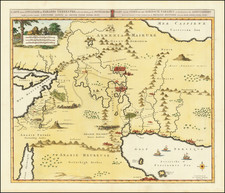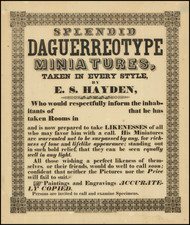From Noah to Abraham
This 18th-century genealogical chart, titled "Table Historique du Second Age du Monde Suivant la Genese," meticulously details the descendants of Noah following the biblical flood, chronicling the passage of time through the lineage up to Abraham.
The chart is an exemplary artifact from the Enlightenment, an era characterized by a rigorous effort to systematize knowledge. It traces the genealogy of Noah's progeny: Shem, Ham, and Japheth, and maps their descendants as they spread across the ancient world. The timeline indicates the lifespan of each figure, aligning with the scriptural accounts of their extended lifespans, and marks significant events such as the construction of the Tower of Babel and the dispersion of Noah's descendants. It is a scholarly intersection of biblical exegesis and historical cartography, reflecting the era's educational objectives and meticulous record-keeping.
The table delineates the three familial lines with precise calligraphy, detailing names such as Arphaxad, Salah, and Eber among Shem's descendants; Cush, Mizraim, and Canaan for Ham's; and Gomer, Magog, and Madai for Japheth's. Notable figures such as Peleg, in whose time the Earth was divided, feature prominently, and there is a clear demarcation of the year of the flood noted as 1656 Anno Mundi, alongside other significant dates leading up to the year 2083 Anno Mundi.
The chart's format is pedagogical, designed to instruct and inform, with textual annotations providing context and explanation for the lineage presented. It is laid out with a clarity that suggests it was intended for both study and reference, likely used in an academic or religious setting.
Nicholas Sanson (1600-1667) is considered the father of French cartography in its golden age from the mid-seventeenth century to the mid-eighteenth. Over the course of his career he produced over 300 maps; they are known for their clean style and extensive research. Sanson was largely responsible for beginning the shift of cartographic production and excellence from Amsterdam to Paris in the later-seventeenth century.
Sanson was born in Abbeville in Picardy. He made his first map at age twenty, a wall map of ancient Gaul. Upon moving to Paris, he gained the attention of Cardinal Richelieu, who made an introduction of Sanson to King Louis XIII. This led to Sanson's tutoring of the king and the granting of the title ingenieur-geographe du roi.
His success can be chalked up to his geographic and research skills, but also to his partnership with Pierre Mariette. Early in his career, Sanson worked primarily with the publisher Melchior Tavernier. Mariette purchased Tavernier’s business in 1644. Sanson worked with Mariette until 1657, when the latter died. Mariette’s son, also Pierre, helped to publish the Cartes générales de toutes les parties du monde (1658), Sanson' atlas and the first French world atlas.









![[ Sea Monsters ] Meerwunder und Seltzame Thier / Wie Die In Den Nitnaecßtigen Laendern im Meer und auf dem Landt gefanden werden](https://storage.googleapis.com/raremaps/img/small/93252.jpg)

![(Fools Cap) Afbeeldinge van't zeer vermaarde Eiland Geks-Kop [Picture of the Highly Renowned Island of Fools Cap, Situated in the Sea of Shares, Discovered by Mr. Lau-rens.]](https://storage.googleapis.com/raremaps/img/small/104266.jpg)
![[Haifa] Situation Plan von der Deutschen Colonie bei Haifa rep.](https://storage.googleapis.com/raremaps/img/small/61139.jpg)
![(California Pictorial Lettersheet) [Manuscript letter on Lettersheet with Bird's-eye view of Stockton, California]](https://storage.googleapis.com/raremaps/img/small/97542.jpg)
